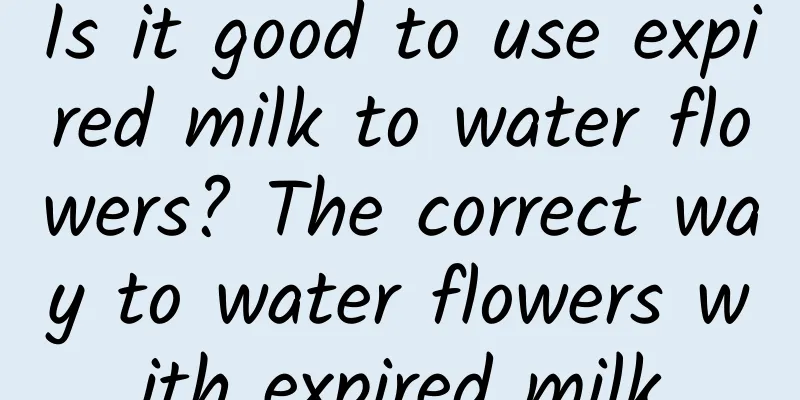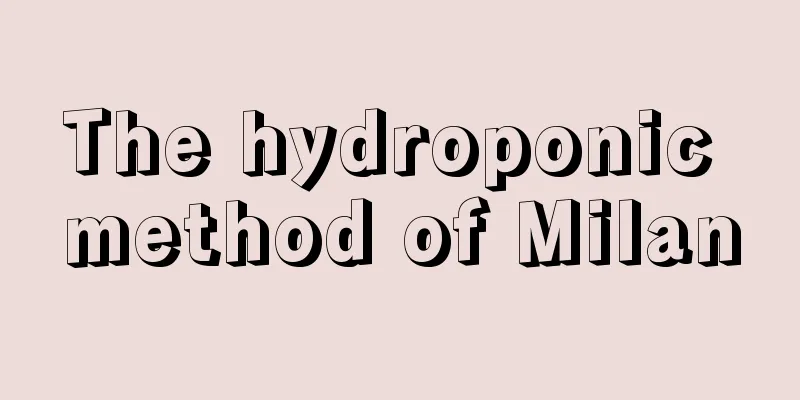How to make your own flower fertilizer at home

Range hood waste oilPour the waste oil in the range hood oil storage box into the soil along the edge of the flower pot. Spoiled grapesCrush the spoiled glucose powder and sprinkle it around the soil in the flowerpot. After three days, the yellow leaves will turn green and grow vigorously. This method is suitable for spider plants, barberry, evergreens, and monstera. Fruit peels, rotten vegetable leavesDirectly mix it into two-thirds of sandy soil or put it into small buckets, pots and other containers, seal the mouth with mud, and ferment it into humus soil. It can be used to plant flowers directly or as a topdressing fertilizer. Chicken and duck feathers, pig hair, hair and livestock hoof hornsWhether buried directly in flowerpots or soaked and fermented, it is a good phosphorus and potassium fertilizer, and the fertilizer effect can last for more than two years. Chinese medicine residue is a good fertilizer for flowersThe residue left after boiling Chinese medicine is a very good fertilizer for flowers. Because Chinese medicine is mostly made of roots, stems, leaves, flowers, fruits, and skins of plants, as well as limbs, organs, and shells of animals, and some minerals, it contains rich organic and inorganic substances. Nitrogen, phosphorus and potassium fertilizers needed for plant growth are all found in traditional Chinese medicine. Using Chinese medicine residue as fertilizer has many benefits for growing flowers and trees, and can improve soil permeability. If you want to use Chinese medicinal residues as flower fertilizer, you must first put the residues into containers such as jars and bowls, mix them with garden soil, and then add some water. Let it ferment for a period of time. After the residues have rotted and turned into humus, they can be used. Generally, the medicinal residue is put into the pot as base fertilizer, or it can be directly mixed into the cultivation soil. Of course, it is not advisable to add too much medicinal residue fertilizer. Generally, the mixing ratio should not exceed one tenth. Too much will affect the growth of flowers and trees. When growing southern flowers in the north, adding an appropriate amount of vinegar to the pot soil when watering can promote the absorption of trace elements such as phosphorus and iron, and prevent chlorosis of branches and leaves. Preparation of nitrogen fertilizerNitrogen fertilizer is the main fertilizer to promote the growth of roots, stems and leaves of flowers. Crush and boil the moldy and inedible beans, peanuts, melon seeds, castor beans, leftover vegetable leaves, bean shells, melon and fruit peels, pigeon droppings, and expired and spoiled milk powder, put them in a small jar, fill it with water, and seal it to ferment and decompose (sprinkle some pesticide if conditions permit). In order to make it decompose as quickly as possible, you can place it in the sun to increase the temperature. When all the substances in the jar sink and the water turns black and has no odor (it takes about 3-6 months), it means that it has been fermented and decomposed. In summer, the upper layer of fertilizer water can be taken out after 10 days and used as top dressing or directly as basal fertilizer. After use, fill it up with water and ferment again. The raw material residue can be mixed into the flower soil. Production of phosphate fertilizerPour sheep horns, pig trotters, bones, fish intestines, poultry feces, fish intestines, meat bones, fish bones, fish scales, crab shells, shrimp shells, hair, nails, livestock hoof horns, and miscellaneous bones into a tank and add an appropriate amount of Jinbaobei fermentation agent (anaerobic type) and a small amount of water. Keep the humidity at 60%-70%, seal it, and after a period of rotting and fermentation, it can be mixed with water for use. It is a very good base fertilizer for potted flowers. If it is further soaked and fermented, it becomes a flower fertilizer rich in phosphorus. These are debris rich in phosphorus. Crush them and mix them evenly into the flower soil, or put them in a container and ferment them to become ideal phosphorus fertilizer. If you use it to water flowers, the flowers will become colorful and bright, and the fruits will be plump. The fertilizer effect can last for more than 2 years. Eggshell flower fertilizerClean the egg white inside the eggshell, dry it in the sun, crush it, and then grind it into powder in a mortar. You can mix 1 part eggshell powder to 3 parts potting soil, and then plant flowers in pots. It is also a long-acting phosphate fertilizer. Generally, during the watering process after planting, the effective ingredients will precipitate and be absorbed and utilized by the growing flowers. After planting flowers, eggshell powder will produce large and colorful flowers and large and full fruits. It is a completely organic phosphorus fertilizer. Production of potash fertilizerLeftover tea water, rice washing water (preferably fermented with Gymboree fermentation agent before use), wood ash water, and water used to wash milk bottles. These are all excellent potassium fertilizers and can be used directly for watering flowers. They all contain certain nutrients such as nitrogen, phosphorus, potassium, etc. and are used to water flowers and trees. They can not only maintain soil moisture, but also add nitrogen fertilizer nutrients to plants, which can promote the development of root systems and luxuriant branches and leaves. Can be used directly to water flowers. Wood ash also contains potassium fertilizer and can be used as base fertilizer. Potassium fertilizer has a significant effect on improving the ability of flowers to resist lodging and diseases and pests. Preparation of complete compound fertilizerPut the leftover bones of pork ribs, lamb ribs, beef ribs, etc. into a pressure cooker, steam them for 30 minutes, and then crush them into powder. Mix 1 part bone crumbs to 3 parts river sand as base fertilizer for flowers. Place it 3 cm from the bottom of the flowerpot, cover it with a layer of soil, and then plant flowers. This bone dust is a complete compound fertilizer with sufficient content of nitrogen, phosphorus and potassium, which is beneficial to the growth and flowering of flowers. Retting sesame paste residue and cake fertilizerUsually, we call the residue after pressing oil from peanuts, sunflower seeds, sesame seeds and soybeans oil cake and sesame paste residue respectively. They are all nutritious feeds and good raw materials for fermenting high-efficiency organic fertilizers. The general process of fermenting liquid fertilizer is as follows: crush the sesame paste residue or soybean meal cake and place it in a jar, add 10 times the amount of water, stir evenly and cover tightly. In summer, it will ferment in more than half a month and become a decomposed slurry-like fermented material. When using, add water to dilute it 20-50 times according to the amount used, and after stirring carefully, it will become a high-quality organic liquid fertilizer with a dark tea color. The following points must be met when fermenting and applying sesame paste residue and bean cake liquid fertilizer: First, the liquid fertilizer applied must be fully decomposed; second, the original liquid of sesame paste residue or bean cake after soaking and fermentation must be diluted with water in a certain proportion to reduce the concentration before it can be applied to flowers and trees. And it should be applied in small amounts multiple times; thirdly, since sesame paste residue or cake fertilizer is a quick-acting fertilizer with high fertilizer efficiency, avoid pouring liquid fertilizer on the branches, leaves, flowers and fruits of flowers and trees. If it is accidentally poured on them, it should be washed off with clean water in time. In addition to fermenting liquid fertilizer, you can also mix sesame paste residue, soybean meal cake, etc. Tofu dregs are good for growing flowers as fertilizerBean dregs are superior fertilizers and are non-alkaline. Although they are the residue after grinding and extracting juice, they still contain a considerable amount of protein, multiple vitamins and carbohydrates. After artificial processing, they are most suitable for the growth of flower seedlings. The method of making homemade bean dregs fertilizer is to put the bean dregs into a tank, add 10 times the amount of clean water and ferment it (about 10 days in summer, about 20 days in spring and autumn). Add 10 times the amount of clean water and mix evenly. Use it to water various potted flowers. The effect is really good. It is especially effective when used to water cactus flowers such as Epiphyllum, Euphorbia, Schlumbergera, Opuntia, and Prickly Pear. How to apply homemade flower fertilizerWhen applying homemade flower fertilizer, you must follow the principle of "thin fertilizer and light application", dilute it appropriately, apply it in a moderate amount, and avoid overapplication. When fermenting fertilizer, you must wait until the fertilizer water turns black and is completely decomposed before pouring it out and mixing it with water (about 9 parts water to 1 part fertilizer water) for application. Do not use raw fertilizer. For picked vegetable leaves, leftover fruit peels, fish heads, chicken feathers and other waste materials, you can dig a pit in the garden, fill them with layers of waste materials and layers of soil, water them thoroughly, cover them with soil, and cover them with plastic film. After half a year of composting and fermentation, when all kinds of bacteria have finished multiplying, dig them out, put them in plastic bags and seal them for storage. When using, mix one part of decomposed organic fertilizer with three parts of garden soil and plant flowers and trees. The effect is very good. Making acidic soilThe acidic potting soil needed for southern flowers to be grown in the north can be made at home. Collect pine needles, willow leaves, and poplar leaves in autumn, and put them into large flowerpots or black plastic bags separately or mixed, with a layer of leaves and a layer of peat soil or garden soil. Add a little ferrous sulfate or ferric citrate. Soak them in water, seal the lid, and compact them. After fermentation in autumn and winter, acidic soil is produced; for Milan, gardenia, osmanthus, primrose, begonia, cineraria, cyclamen, etc., willow leaf fertilizer is most suitable. Routine maintenance can also be assisted by a mixture of ferrous sulfate, ferric citrate and water. Prepare the fertilizer in a ratio of 12:6:100 in spring and 6:4:100 in summer. Then put it into a soft-packaged plastic bottle, bury the bottle upside down in the soil, screw the bottle cap to a slight leakage level, and allow the fertilizer to slowly seep into the soil. |
<<: The main causes of flower death and treatment methods!
>>: How to take care of the flowers you just bought home
Recommend
When should I repot my fortune tree? How long should I water it after repotting?
1. Time to change pots You should choose spring t...
Why do gardenia leaves dry up in winter?
1. Insufficient watering Reason: Gardenia will co...
Is tuberose poisonous?
Introduction to Tuberose Tuberose, also known as ...
Purple cabbage planting time and method
Purple cabbage planting time Purple cabbage is ge...
Is Houttuynia cordata poisonous?
Substances contained in Houttuynia cordata Modern...
When is the best time to prune fruit trees?
Fruit tree pruning There are several main benefit...
Is the yield of flat peach high? What is the yield per mu?
Is the yield of peaches high? The yield of peache...
What should I do if the night succulent grows too tall?
What does the long growth of the succulent plant ...
The difference between Aloe Vera and Aloe Vera
1. Leaf Difference The leaves of the Aloe Vera ar...
The difference between Lantana camara and Lantana camara
1. Difference in appearance Lantana camara is a s...
How to promote new buds of tiger lily
Bottom Before we prepare the soil for it, we can ...
How to store Oxalis bulbs
Early knowledge on the preservation of Oxalis bul...
What to do about crabapple leaf rust? What's wrong with dry leaves?
1. What to do about leaf rust Rust disease is mor...
The “money tree” has been growing for a long time but there is no movement? Bury a plant called "it" in the soil, and it will keep growing leaves all year round!
This trick is to use quail eggs. Everyone should ...
What is the best fertilizer for lemons?
Lemon fertilization time Generally speaking, fert...









